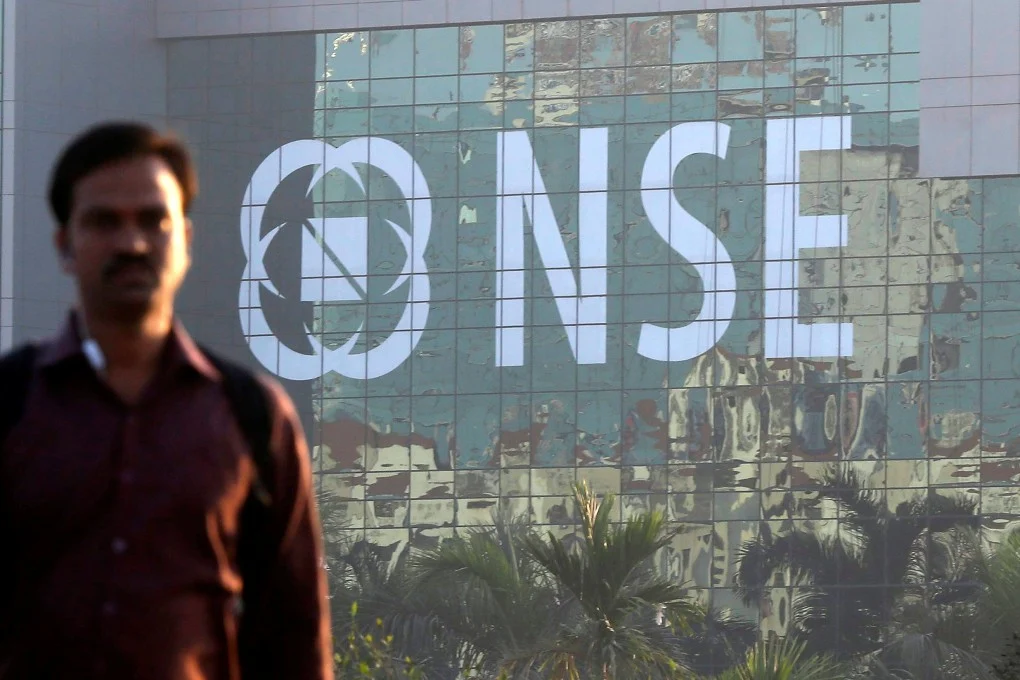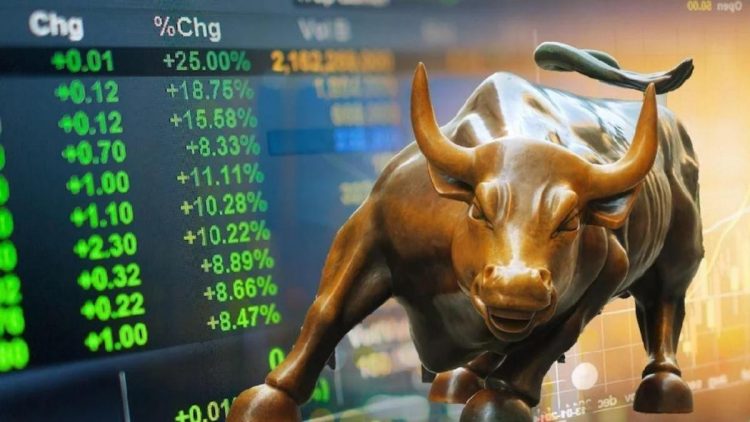Introduction: Overview of India’s Rapidly Growing Stock Market and Its Increasing Appeal to Global Investors
India’s stock market has seen extraordinary growth over the last decade, positioning itself as a key player on the global financial stage. With the country’s rapidly developing economy, a growing middle class, and an increasing number of corporate listings, India has captured the attention of investors worldwide. The Nifty 50 and Sensex, the benchmark indices representing India’s two main stock exchanges, the National Stock Exchange (NSE) and Bombay Stock Exchange (BSE), have consistently reached new highs in recent years. This surge in market activity has attracted significant foreign investment, further fueling India’s economic ascent.
In this article, we will explore the driving forces behind India’s stock market boom, the new industries that are taking off, the challenges that might inhibit its growth, and what the future holds for India’s role in the global financial ecosystem.
Economic Drivers: Key Factors Behind India’s Stock Market Boom
India’s stock market growth is being driven by several key factors that reflect its broader economic transformation. Let’s explore the major economic drivers contributing to this upward trajectory:
- Strong GDP Growth: India has been one of the world’s fastest-growing major economies for years. Despite global challenges like the pandemic and geopolitical tensions, India’s GDP growth has remained relatively resilient. The country’s economy is projected to continue expanding at a robust pace, thanks to a combination of domestic consumption, government investments in infrastructure, and a growing services sector. India’s large domestic market of over 1.4 billion people is an attractive feature for investors seeking high growth potential.
- Digital Transformation: India is undergoing a rapid digital transformation, with increased internet penetration, digital payments, and the expansion of e-commerce. The rise of the digital economy has propelled the stock market, particularly in sectors like technology, fintech, and e-commerce. Companies like Zomato, Paytm, and Nykaa have emerged as high-profile listings, drawing investor attention to India’s burgeoning tech landscape.
- Young Population and Demographics: India has one of the youngest populations in the world, with a median age of 28 years. This demographic advantage is a long-term driver for growth, as it translates into a rapidly expanding consumer base. A younger population tends to have higher spending potential, fueling sectors such as consumer goods, technology, and financial services. The younger workforce also makes India an attractive destination for global companies seeking a skilled and affordable labor pool.
- Foreign Direct Investment (FDI) and Policy Reforms: India has been successful in attracting Foreign Direct Investment (FDI), aided by a series of policy reforms designed to improve the ease of doing business. Government initiatives such as the Make in India and Startup India campaigns have fostered a favorable business environment. The Goods and Services Tax (GST) and labor market reforms have streamlined business operations, making the country an increasingly attractive investment destination.

Market Trends: The Rise of New Industries and the Surge in IPOs
India’s stock market boom is not only driven by traditional industries such as manufacturing and banking but also by the rapid rise of new sectors that are reshaping the Indian economy. Here are some of the major trends driving market growth:
- Technology and Startups: India is quickly emerging as a global hub for technology startups, driven by a massive consumer base and significant funding from both domestic and international investors. The Indian tech sector is witnessing explosive growth, with companies like Infosys, Tata Consultancy Services (TCS), and Wipro leading the charge in software services, IT consulting, and outsourcing. Additionally, Indian startups in areas like e-commerce, fintech, cloud computing, and artificial intelligence (AI) are attracting significant capital from venture capitalists and private equity firms.
- Pharmaceuticals and Healthcare: India is a global leader in pharmaceutical manufacturing, particularly in generic drugs. The rise in healthcare investments, increased access to affordable medicines, and advancements in medical research are major growth drivers. India’s healthcare industry is expected to become a $370 billion industry by 2025, making it an attractive sector for investors.
- Consumer Goods: With rising disposable incomes and a growing middle class, the consumer goods sector is flourishing. Companies catering to the burgeoning demand for products in areas such as fashion, beauty, and household goods are seeing substantial growth. The e-commerce boom has fueled the growth of online retail platforms like Flipkart and Amazon India, which in turn benefits a host of ancillary industries like logistics and digital payments.
- Increased IPO Activity: Over the past few years, India has witnessed a surge in Initial Public Offerings (IPOs). More companies are listing on the stock market to raise capital and gain visibility, which has brought fresh dynamism to the market. The likes of Zomato, Paytm, and Nykaa have made headlines by going public, and many more are expected to follow. In 2021 alone, India saw over $7 billion raised through IPOs, marking the country’s most active year for public offerings.
Challenges: Regulatory Hurdles, Income Inequality, and Political Risks
Despite the positive momentum, India’s stock market is not without its challenges. While many investors are optimistic about the country’s long-term prospects, there are several risks to consider:
- Regulatory Hurdles: India’s financial regulations and tax policies can be complex and inconsistent. The Securities and Exchange Board of India (SEBI) has made significant strides in improving market transparency, but bureaucratic inefficiencies and unclear rules still exist. Foreign investors often face difficulties navigating the regulatory landscape, which could limit their willingness to commit long-term capital.
- Income Inequality: India remains a highly unequal society, with significant disparities in wealth and access to opportunities. While India’s middle class is growing rapidly, a large portion of the population remains in poverty. Income inequality can affect domestic consumption patterns and slow down the overall economic growth that is often essential for sustaining stock market rallies.
- Political Risks: India’s political landscape is known for its volatility, with frequent policy changes and regional tensions. Although the government has made strides toward creating a more business-friendly environment, the possibility of political instability, changes in tax laws, or the introduction of protectionist measures remains a concern for investors. State-level governance and the federal structure can also pose challenges in terms of policy uniformity and investor confidence.
- Geopolitical Risks: India’s geopolitical location, with its complex relationship with neighboring countries such as China and Pakistan, can pose risks for both investors and businesses. Border tensions or global geopolitical instability, such as trade wars or conflicts, could negatively affect market sentiment and lead to volatility in stock prices.
Outlook: Can India Continue to Attract Foreign Investment and Become a Major Player in the Global Financial Markets?
India’s economic growth and the rise of its stock market make it one of the most attractive destinations for foreign investment in the world. The combination of GDP growth, a young population, increasing digital transformation, and policy reforms positions India as a compelling investment destination. Additionally, new sectors like technology, pharmaceuticals, and consumer goods are creating vast opportunities for both domestic and international investors.
However, while the prospects are positive, India must continue to address challenges such as regulatory complexities, income inequality, and political risks. If the government can continue its reform efforts and create a more stable and predictable business environment, India could very well emerge as a global investment hub, with the potential to rival China and other emerging markets in terms of economic influence.
The stock market boom reflects broader optimism about India’s future, but the long-term success of India’s financial markets will depend on whether it can sustain growth in the face of global economic shifts, domestic challenges, and competition from other emerging economies.
Conclusion
India’s stock market is experiencing a remarkable period of growth, fueled by a combination of economic drivers like strong GDP growth, a young population, digital transformation, and growing foreign investment. New industries, including technology, pharmaceuticals, and consumer goods, are rising to prominence, creating exciting opportunities for investors. However, challenges such as regulatory complexities, income inequality, and political risks remain.
If India can successfully navigate these challenges while continuing to attract investment and foster innovation, it is well-positioned to become a key player in the global financial markets. With the right policies and a continued focus on market development, India’s stock market boom could signal the beginning of a new era for one of the world’s most dynamic economies.





























